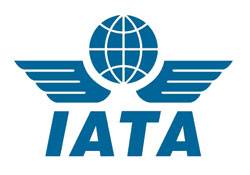
The International Air Transport Association (IATA) opened its 69th Annual General Meeting (AGM) and World Air Transport Summit in Cape Town, South Africa today. The meeting kicked-off with strong calls for African governments to take full advantage of aviation as a catalyst for growth and development.
“Nowhere is the potential for aviation greater than on the African continent—the home to a billion people spread across 20% of the world’s land mass. Economic reforms and political stability have spurred growth and development. South Africa is the newest member of the BRICS grouping of states.
And the 50th anniversary of the African Union reminds us of its vision for an integrated, prosperous and peaceful Africa, driven by its own citizens and representing a dynamic force in the global arena. Aviation is well placed to contribute to these and the other long-term goals so vital to the development of Africa,” said Tony Tyler, IATA’s Director General and CEO.
The AGM was opened with formal addresses from the Deputy President of the Republic of South Africa, Kgalema Motlanthe; and the Minister for Public Enterprise of the Republic of South Africa, Malusi Gigaba. In the opening session, Acting Chief Executive Officer of South African Airways, Nico Bezuidenhout was elected President of the AGM.
“Global connectivity—enabled by aviation—has a very powerful role to play both in integrating the 54 national economies of Africa and in connecting them to the world. With a few kilometers of tarmac, even the most remote destination becomes a part of the global community. But this will require the commitment of governments to solve some major issues,” said Tyler.
Safety is the biggest challenge facing African aviation. “IATA’s 20 Sub-Saharan members are performing in line with the global average on safety as are the 24 Sub-Saharan airlines that have met the 900+ standards of the IATA Operational Safety Audit (IOSA).
But if we look at the entire African industry, safety remains a challenge with an overall accident rate many times the global average. This AGM is an opportunity to send a clear signal to the region’s governments that world class safety is possible in Africa and that we support their commitment to achieving it by 2015,” said Tyler.
Other key issues in Africa include:
Costs: The high cost operating environment in Africa places the continent’s airlines at a competitive disadvantage that impedes the important role that aviation connectivity could play.
Fuel: Fuel costs are 21% more expensive in Africa than the global average. Government policies towards aviation in Africa tend to see it as an “elite” product, rather than as a critical component of the continent’s economic infrastructure.
As a result, it is heavily taxed—often in violation of International Civil Aviation Organization principles that prohibit the taxation of jet fuel for international operations. Moreover, despite high infrastructure charges, the failure to invest in fuel supply infrastructure has resulted in frequent supply disruptions that cripple the operations. Angola (1), Ghana (2) and Uganda (3) have begun to address fuel issues, setting a good example of progress.
Taxation: Africa also suffers the impact of onerous direct taxes on tickets. Solidarity taxes, tourism taxes, VAT, sales taxes and infrastructure levies and taxes all make connectivity more expensive. This limits the power of aviation to drive economic growth, which would be a much greater source of revenue for governments.
Liberalization: African economic growth will demand better connectivity—integrating African economies and connecting them to world. This must be better enabled by government policies.
Aviation already has a significant footprint in Africa—supporting $67 billion in economic activity annually and 6.7 million jobs. In South Africa, aviation supports some 350,000 jobs and contributes approximately ZAR 74 billion to South African GDP.
The AGM is attended by some 700 aviation leaders representing IATA’s 240 member airlines, their partners and stakeholders.
 The International Air Transport Association (IATA) announced global passenger traffic results for April showing a 3.2% increase in demand over the previous April. Emerging markets are continuing to lead air travel growth, with all regions reporting year-over-year gains.
The International Air Transport Association (IATA) announced global passenger traffic results for April showing a 3.2% increase in demand over the previous April. Emerging markets are continuing to lead air travel growth, with all regions reporting year-over-year gains.

